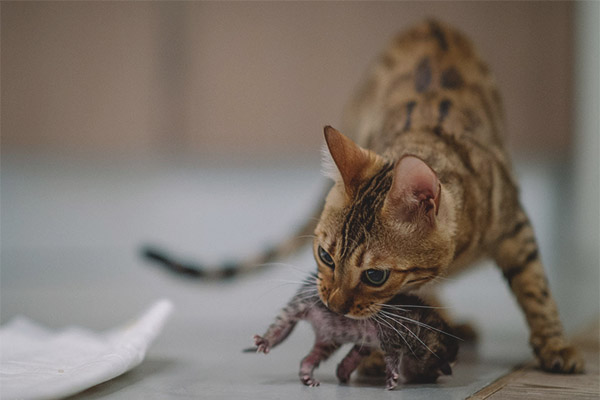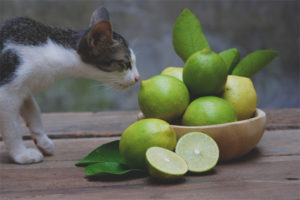The content of the article
The birth of offspring for cats is a very stressful moment, as is the generic activity itself. Probably, in this case, women can understand animals, because having a child is also not a small stress. For this reason, many cats change their behavior and character after the birth of kittens. You can often notice how the newly-made mommy drags the kittens by the scruff, bites or even hits their hind legs, forcing the little ones to squeak. As a rule, the owners, having found such a picture, begin to think that something is wrong with the animal, and sound the alarm. However, in reality, not always the biting of one’s own offspring indicates the presence of aggression in a cat.
Bites, then brings up
Newly-born mother cats immediately after childbirth face a rather difficult and serious task. In a very short time, they need to teach their children all that they can do.This is necessary first of all so that the kittens can continue to live independently. Indeed, in animals, the survival instinct is developed much more strongly, and, consequently, the acquired skills will allow them to live in any conditions.
There is no cause for concern if the cat bites its kittens slightly, without leaving any painful marks on their skin. Most often, cats bite offspring until the kitten makes a loud squeak. After that, the cat usually releases the baby, taking into account that he understood the lesson.
Biting as a way to calm the kittens and protect
If we compare the psychology of representatives of the cat family and the psychology of people, then, of course, we can say that they are completely different. However, still some fairly striking similarities can be noted in our behavior. For example, cats, as well as people, have their own methods of raising kittens, as well as protecting and protecting them from danger.
If people try to calm the unleashed babies by slightly slapping them on the bottom, then the cat performs about the same action by biting the kitten in the neck area.Mom-cat may well get angry, and thus punish the baby, who suddenly amused and rushes around the house, not noticing anything in its wake. Sometimes adult cats also fight back kittens who are in a playful mood and not giving mom a rest and replenish their strength.
Often cats bite their offspring behind the scruff of their offspring, preventing them from getting out of the box or other places specially arranged for them. This usually happens if the cat believes that it is too early for babies to wander around the apartment. Mother-cat may bite and even angrily hiss if she sees that the kittens have gone to the balcony or to another, dangerous, in her opinion, place.
Do not worry if you witnessed a cat grabbing a kitten by the scruff, dragging it somewhere, and then letting go. Most likely, she absolutely does not seek to cause him any harm, but, quite the contrary, tries to protect him in this way. Sometimes, in trying to protect her kitten from the perceived danger, the cat can harm the baby by carelessly taking it with his teeth. As a rule, this happens the first time, over time, a young mother learns to do it right.
Hunting training
For many, the behavior of a cat as it teaches kids how to hunt comes as a surprise. At the same time, people do not always understand that what is happening is just lessons that do not carry any danger. As a rule, during such activities mother-cat can catch a kitten with its front paws, hold it tightly enough, and start beating it with its hind legs. In this case, the cat bites and licks the baby in order, in addition, it can also purr, making it clear to the kitten that he is doing everything correctly. From the side of this behavior may seem very strange. In fact, the mother cat simply shows her kids how to properly grab the victim, and then suppress it. These skills can be useful for young cats in order to further defend their territory. Over time, it will be noticed that the kittens begin to work out the learned techniques on top of each other.
Later, when the kittens become more adult, and will already move around the apartment, it will be possible to observe new lessons, which will include the skills of pursuit and hunting jumps. Here, mom will show by example how to carefully track down the victim, sneak, and then attack. It is possible that the victim will be the household.Well, then, the kittens will also work out their knowledge, both on each other, and on the mother.
Schooling to the tray
Many smart cats also immediately vaccinate their kittens and walking skills in need of a strictly designated place, that is, in the tray. In this case, it will also be possible to observe biting or punching in case the kitten does not want to understand the mother.
Games or not?
When bites reflect aggression?
To understand that mom-cat is aggressively disposed towards her kittens is not difficult. While learning whether to play, despite biting, the cat remains gentle and affectionate sweat towards the offspring, she periodically licks and caresses them. Biting is usually very careful and does not leave marks on the body.If you notice that the cat constantly leaves the kittens on the skin, painful traces of bites or claws, then most likely there is a problem. In addition, in the event of aggression, the cat usually constantly sizzles on kittens.











To send